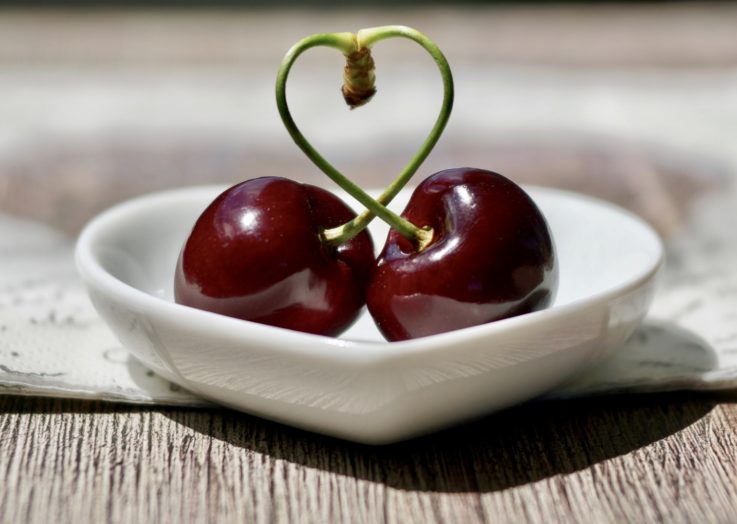You’re probably aware that February is the month of “love.” Whether or not you celebrate Valentine’s Day, you’ve likely seen bright red hearts scattered abundantly at just about every retail location. What unfortunately often gets overshadowed by this so-called “Hallmark holiday” is perhaps the more important reason February is considered the month to celebrate the heart. Yes, it’s American Heart Month, and this is as good a time as ever to remember how important our heart health is (and a good time to discuss heart healthy foods).
Did you know that in the U.S., heart disease is the top cause of death for both men and women? Sadly, this is true, and perhaps even more shocking is that nearly half of all adults in the U.S. have some type of cardiovascular disease. Each year, 1 in 4 deaths in the U.S. is caused by heart disease, and worldwide, it accounts for around a third of all deaths. Yet, many of these deaths are preventable simply by making healthier choices.
What types of choices can make a difference? According to the Office of Disease Prevention and Health Promotion:
- Use fresh or dried herbs and spices rather than salt to season foods and encourage friends and families to do the same.
- Make physical activity a part of your day. And if you have kids or grandkids, it’s a good idea to start early to instill good habits to last a lifetime. 1
Of course, what you eat can also make a difference—a big difference! This is because the foods you choose to eat can influence triglyceride levels, cholesterol (types and amounts), inflammation pathways, and blood pressure, which all impact your risk for heart disease.
If you fill up your plate with these heart healthy foods below, you’ll be taking steps to drastically improve your cardiovascular health, and who doesn’t love a healthy heart?
Heart Healthy Foods List
Go Green
Dark green leafy vegetables—such as spinach, kale, Swiss chard, collard greens, mustard greens, turnip greens, and beet greens—provide a rich supply of vitamins and minerals including vitamin K, which has been shown to promote cardiovascular health by protecting arteries from calcifying and becoming stiff. 2 In other words, vitamin K is essential for healthy, flexible arteries, and it also helps the body properly use calcium, which can increase the risk of heart disease when consumed excessively or out of balance with vitamin K.
These heart healthy foods also provide nitrates, which are important for healthy blood pressure. 3 In fact, studies have found that when folks eat more leafy greens, they have a lower risk of heart disease. 4, 5
Speaking of “going green,” go ahead and enjoy your avocado toast. Avocados, you see, are a source of heart-healthy monounsaturated fats, and more specifically, oleic acid (the same powerful healthy fat found in olive oil, which is one of the healthiest foods you can add to your heart-healthy diet), which has been associated with lowering cholesterol levels, the risk of heart disease, as well as metabolic syndrome. 6
Other green foods that have been shown to support the heart include kiwi fruit, green beans, asparagus, broccoli, and split peas.
Burst Some Berries
Juicy and sweet, berries aren’t just delicious treats that make a great snack or dessert, they are also loaded with important heart-healthy phytonutrients like anthocyanins. These antioxidants have been shown to support the body’s natural antioxidant defense systems and healthy levels of inflammation, and this is critical because excess oxidative stress and persistent, unhealthy levels of inflammation can lead to heart disease. 7, 8
There are so many berries to choose from: blueberries, blackberries, strawberries, bilberries, gooseberries, cranberries, raspberries, and many more. Go ahead and load up on these heart healthy foods for their taste and heart-health benefits. Not a big fan of berries? Give cherries a try.
Go Nuts (and Seeds…)
Whether you choose walnuts, almonds, pecans, or chia, flax, pumpkin, or hemp seeds, you’ll enjoy a wealth of heart-healthy nutrients, including fiber, omega-3 fats, and micronutrients.
Eating walnuts, for example, has been shown to decrease oxidative stress, inflammation, cholesterol, and diastolic blood pressure (the “bottom” number). 9, 10 Almonds also boast a long list of nutrients for heart health, including fiber, monounsaturated fats, vitamins, minerals, and antioxidants. 11, 12
Speaking of antioxidants, did you know that pecans pack more antioxidant capacity than any other tree nut? Yep, it’s true; the ORAC value (a laboratory measure of antioxidant capacity) of pecans is 33% higher than walnuts, which are frequently regarded as the healthiest nut, and the antioxidant capacity of pecans is 10-fold higher than macadamias, 9-fold higher than cashews, 5 ½-fold higher than peanuts, and 4-fold higher than almonds. Pecans are higher than any other nut when it comes to polyphenols, which provide powerful antioxidant, anti-inflammatory, and detoxification properties.
In general, eating nuts has been associated with lowering the risk for heart disease (specifically in women with type 2 diabetes) and all-cause mortality, especially when they replace other less healthy options, like chips or cookies. 13, 14
Seeds like hemp, flax (ground), and chia are also chockful of heart-healthy nutrients, such as omega-3 fats and fiber, and research has shown they may reduce inflammation, blood pressure, and blood fats—all of which may reduce the risk of heart disease. 15, 16, 17
Of course, it’s also worth remembering that while nuts and seeds are loaded with nutrients, they’re also calorie dense, and as you might imagine, maintaining a healthy weight is an integral component of supporting a healthy heart. So, for those who are trying to maintain or even lose weight, watch your portion sizes and shoot for around a thumb’s worth per serving.
For what it’s worth, the so-called battle of the bulge is a bit more nuanced when it comes to nuts. For example, studies show that eating nuts tends to increase satiety (feelings of fullness and satisfaction), reduce appetite, and lower food intake at subsequent meals. Even more, the body doesn’t typically absorb all the fat and calories from nuts; in fact, studies show that upwards of 20% of the fat (and calories stored within it) gets excreted. Don’t believe me? Just check your stool for undigested pieces of nuts.
Eat the Whole Grain
Carbohydrates as a whole have earned a bad reputation lately, but it’s best not to confuse the grains most people consume (i.e., refined) with the whole truth. Whole grains, such as brown rice, oats, rye, barley, quinoa, buckwheat, and even whole wheat (e.g., bulgur, freekeh, farro, wheat berries), provide an array of heart-healthy nutrients to our diets, such as fibers, vitamins, and minerals as well as phytonutrients (i.e., antioxidants). Fibers, for example, have been shown to help reduce levels of LDL cholesterol (the so-called “bad” cholesterol), raise HDL cholesterol (typically considered “good” cholesterol), lower blood triglycerides, lower blood pressure, and reduce markers of inflammation, and thus, may have an impact on lowering the risk of heart disease. 18
According to a robust systematic review study and meta-analysis (often considered the highest scrutiny of scientific evidence) published in the BMJ, researchers concluded that “whole grain consumption is associated with the reduced risk of coronary heart disease, cardiovascular disease, and total cancer, and mortality from all causes, respiratory diseases, infectious diseases, diabetes, and all non-cardiovascular, non-cancer causes.” 19
What’s more, folks who eat three servings a day of these heart healthy foods also enjoy lower blood pressure, which researchers suggest is enough to decrease the risk of coronary artery disease by up to 15% and the risk of stroke by up to 25%. 20
Other sources of heart-healthy fibers include beans and legumes like black, white, and kidney beans, lentils, and edamame.
Go Fish
Fatty fish, that is. The oils found in fatty fish (like salmon, sardines, mackerel, herring, trout, and tuna) and fish or krill oils are a rich source of the oh-so-healthy omega-3 fatty acids. For instance, in one study, folks who upped their consumption of fatty fish to three times a week while reducing calories for just eight weeks experienced decreased diastolic blood pressure. 21 On the other hand, those who ate less fish than usual were more likely to experience increased blood pressure, obesity, or diabetes. 22
The American Heart Association recommends at least 2 servings of oily fish like salmon per week to support a healthy heart. And while omega-3 fats tend to get all the love, these fatty fish are also chockful of other key heart-healthy nutrients, like B12, vitamin D, selenium, lutein, and zeaxanthin, for example.
Heart Healthy Foods List: A Recap
While you may or may not always feel a lot of love for the big red hearts (or the over-commercialization of Valentine’s Day), it is worth it to give your body, and especially the heart beating within your chest, a lot of love—not just in February but throughout the year. The heart works really hard for us every second of every minute of every day of the year, and one good way to say thank you is to nourish your body with these heart healthy foods.









